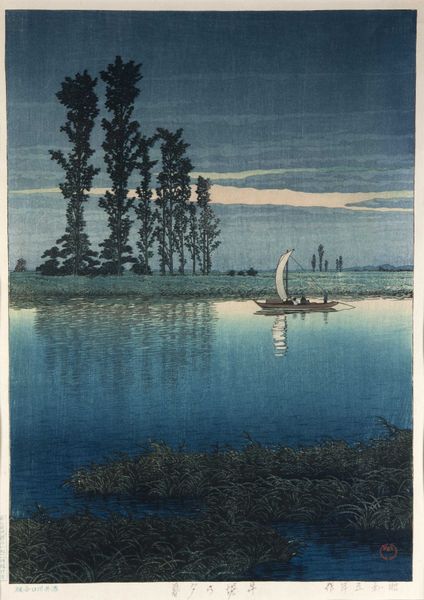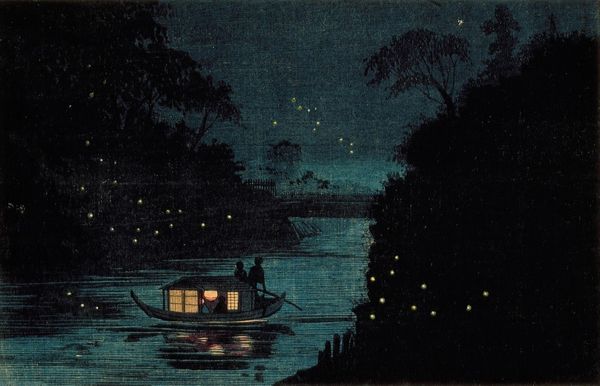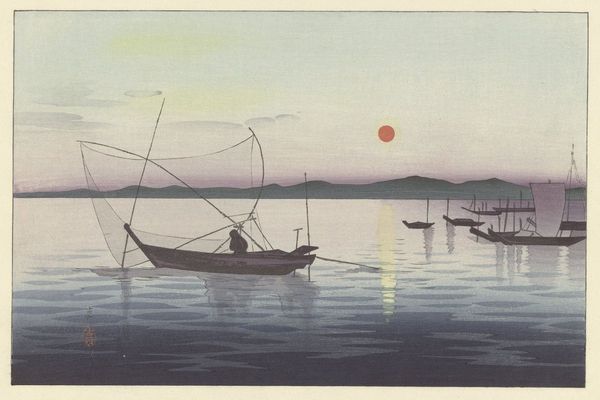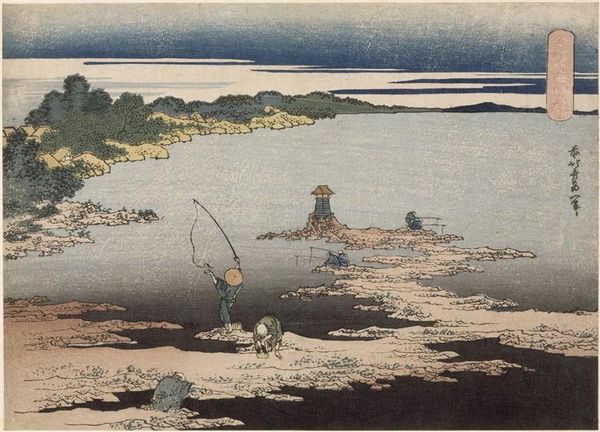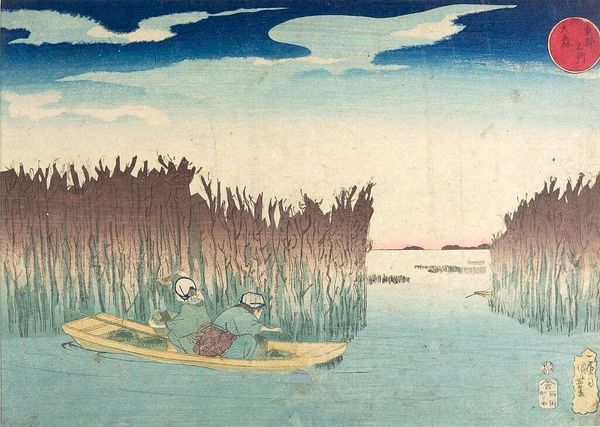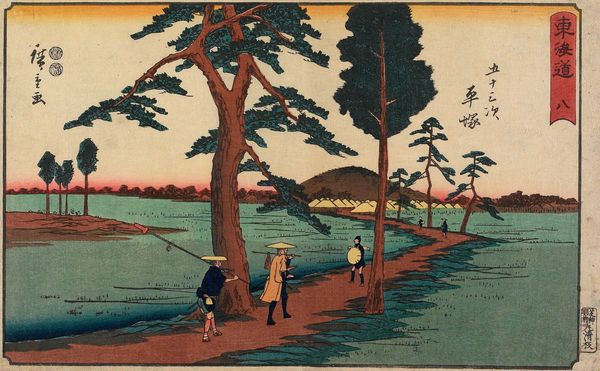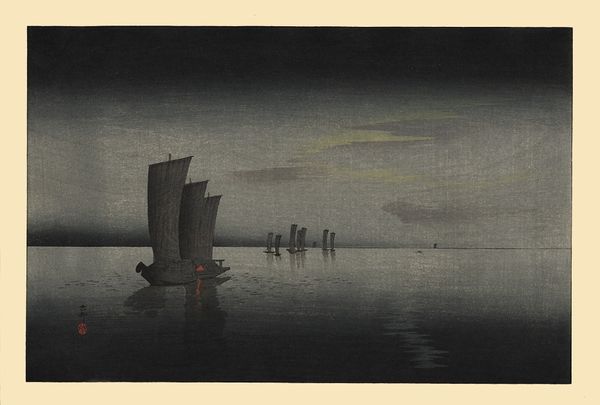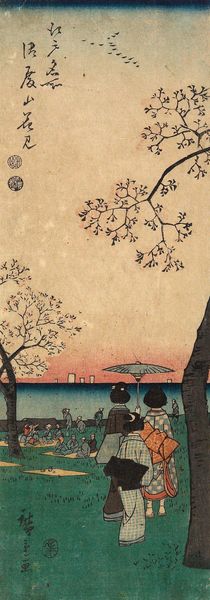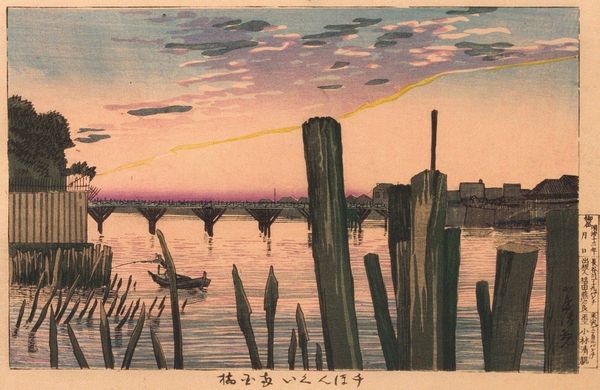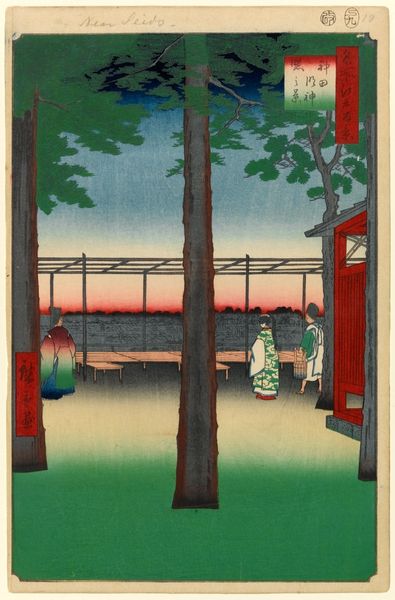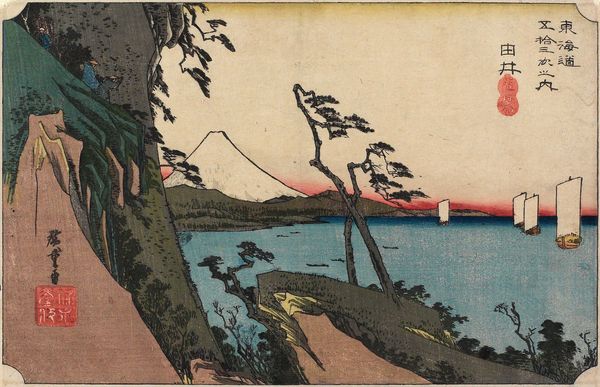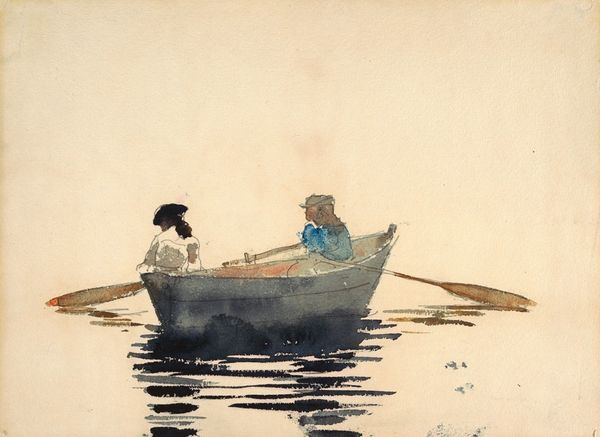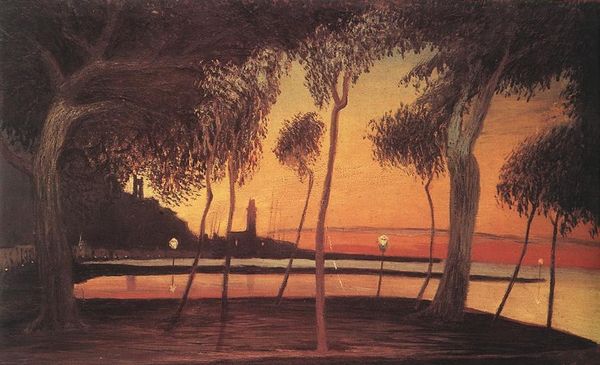
Copyright: Public Domain: Artvee
Curator: This is Kobayashi Kiyochika’s 1881 woodblock print, “Night on the Sumida River.” What’s your first impression? Editor: The somber tonality strikes me first. It's very muted. I can almost feel the cool dampness of the evening air and hear the water lapping against the shore. Curator: The atmospheric perspective is skillfully rendered through variations in the shade and lightness. Kiyochika evokes this almost monochromatic mood, typical of ukiyo-e, using the natural variations in tone produced by the woodblock printing. It accentuates flatness rather than illusionism. Editor: Right, because the Sumida River was historically a vital social space in Tokyo. These nighttime scenes weren’t just picturesque—they reflected contemporary urban life and its increasingly Western influences, evident in the gentleman’s attire, for example. I would hypothesize that the print speaks to modernization, as the Sumida was an integral transportation and economic route within Tokyo, wouldn’t you agree? Curator: Exactly. Note the subtle play of light – it animates the scene. The artist uses reflected light to direct the eye toward the silhouetted figures walking. These verticals draw attention to the human figures' place within this scene. Their presence offers a scale and grounds us. Editor: Speaking of, I find their anonymity so interesting. Are they even meant to be specific individuals? It’s almost like Kiyochika uses them to stand for any inhabitants who enjoy their daily lives by the Sumida. What is interesting to me is that he chooses this moment of quiet, which emphasizes the public availability of this enjoyment, so as to highlight the fact that they still occur even during the transitional period from pre-Meiji to post-Meiji restoration. It suggests both continuity as much as change. Curator: Precisely! The print uses this interplay of light and shadow to guide the viewer’s eyes through an ordered but not prescriptive narrative. Editor: Yes, and I like that your focus allows us to see how he manages to incorporate cultural values, beliefs, and societal structures through his medium. That’s crucial. Ultimately, he uses the scene on the Sumida to demonstrate cultural heritage! Curator: And on the other hand, I have attempted to emphasize his technique to expose Kiyochika’s artistic intentions.
Comments
No comments
Be the first to comment and join the conversation on the ultimate creative platform.
